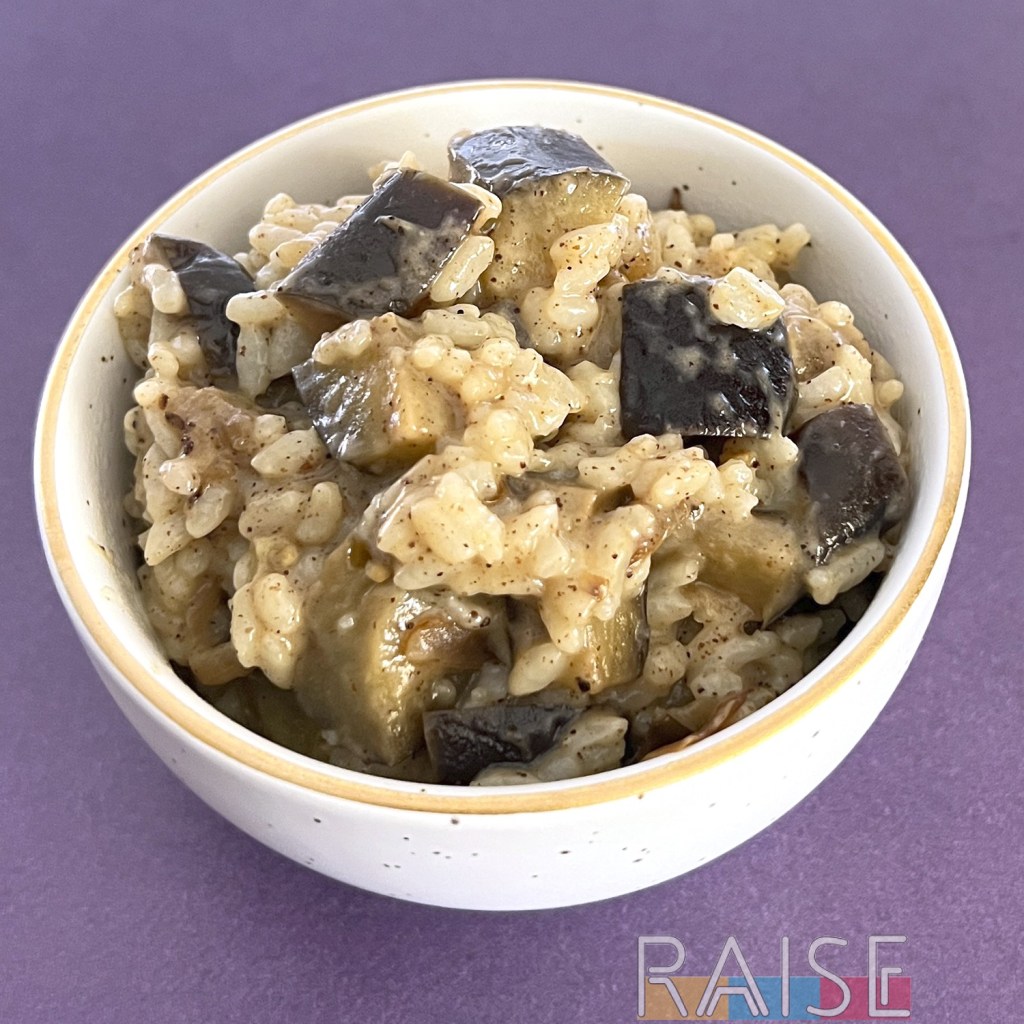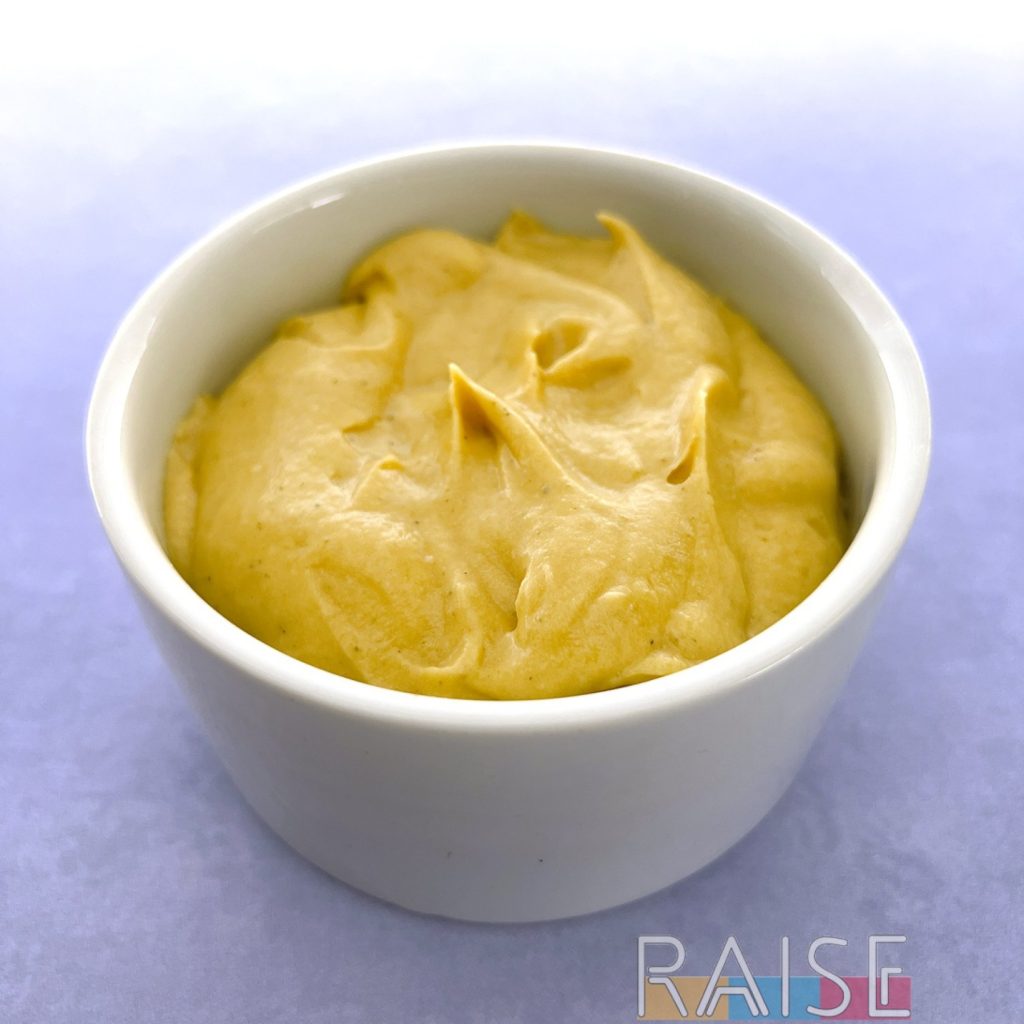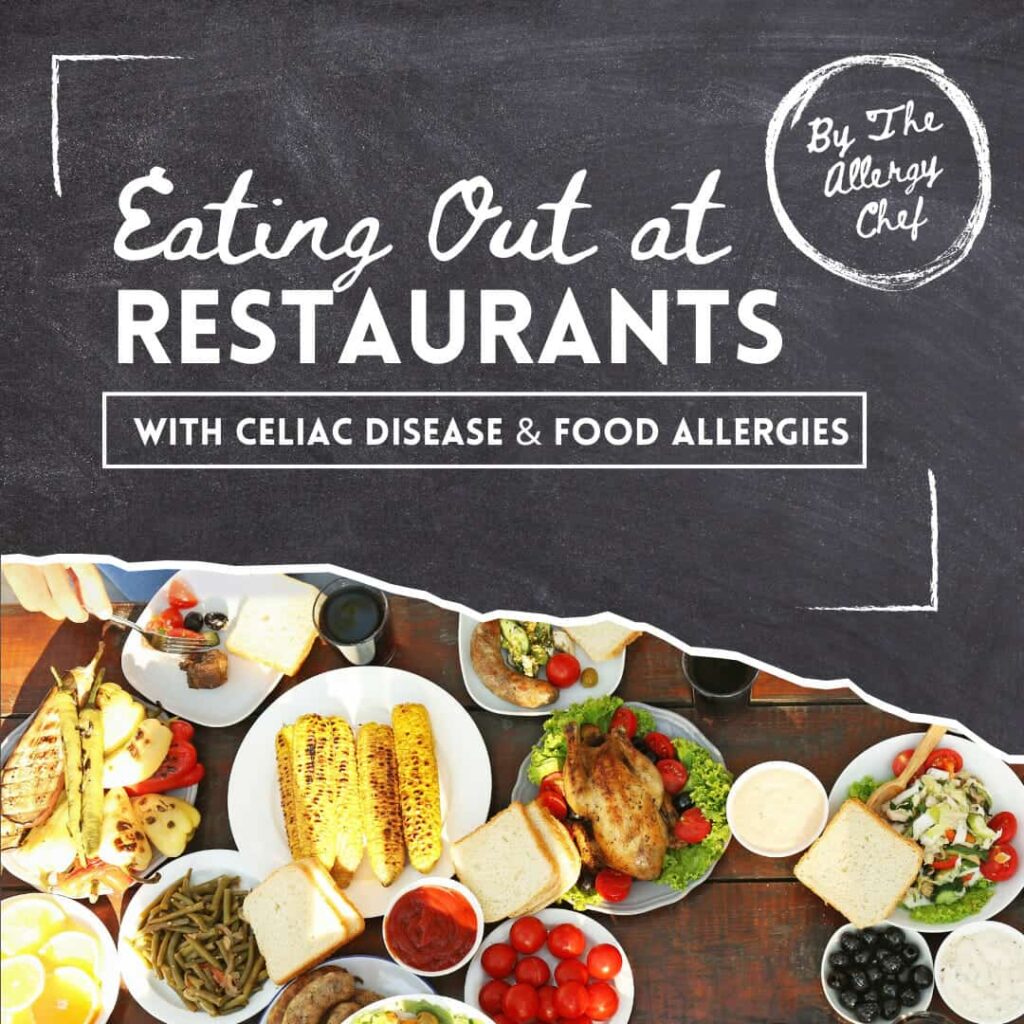After reading this article, I’d suggest reading up more on cross-reactivity, different species of mushrooms, and how molds, yeast, and fungus are all related. I’ll warn you now, you’ll be reading for hours and hours on end, and there will still be more to learn. So, let’s get this introduction started, then I’ll be talking more about the cooking and shopping aspects of managing an allergy to mushrooms.
Note: Like tree nuts and seeds, you can be allergic to one, some, or all varieties of mushrooms. Work with your medical team to understand your unique diagnosis.
What is a Mushroom Allergy?
A food allergy is a response by your immune system that’s triggered by a protein that your body sees as a threat. This is not the same thing as a food intolerance or an autoimmune disease. In the case of a mushroom allergy, this means that you have an immune system IgE mediated allergic reaction to mushrooms and foods containing mushrooms. A “true” (or “traditional”) food allergy is IgE mediated, and the immune system usually elicits a reaction within immediate ingestion to four hours. Outside of that window, it’s usually suspected that you have a food intolerance.
However, there are some types of allergic diseases that are “true” food allergies and the reactions happen outside of the four hour window (FPIES is one example). Additionally, a person can have a more rare or complex case and suffer from delayed reactions (which can still be “true” food allergies).
In some patients, they have what’s called contact or airborne allergies as well. This tends to be a bit more common in those with peanut and tree nut allergies. In their case, a reaction can be triggered by touching the food or by breathing in its particles (like when cooking or baking). Food allergies can be life threatening and should always be taken seriously.
If you suspect you have a food allergy, ask your healthcare provider/main doctor to refer you to an allergist for allergy testing where a blood test and/or skin prick test can be ordered to determine if you have an allergy. Know that tests are not 100% accurate, but are still a good diagnostic tool. Work with your allergist and healthcare providers to create an action plan that will meet your needs.
It’s important that those with food allergies have an action plan, and epinephrine auto-injectors at the ready if necessary. Whilst having a food allergy does impact your life, know that your life (and your meals) will still be awesome.
Symptoms of Mushroom Allergy
Allergy symptoms can vary from person to person, as no two people are the same. Symptoms of an allergic reaction can include persistent non-painful rash, severe gastrointestinal symptoms, stuffy nose, sore throat, and other ENT issues, whilst some have shortness of breath or difficulty breathing. There are hundreds of different symptoms a person can experience due to food allergies. The most severe type of allergic reaction is called anaphylaxis. A severe allergic reaction can lead to anaphylactic shock, and if left untreated, can lead to death.
Upon ingesting mushrooms, for those allergic to them, individuals may experience some of the following symptoms:
- Swelling of the Lips
- Swelling of the Tongue
- Swelling of the Throat
- Itchy Mouth and/or Throat
- Soreness in the Mouth and/or Throat
- Shortness of Breath
- Difficulty Breathing
- Chest Pain
- Wheezing
- Skin Rashes
- Flushing
- Itching/Itchy Skin
- Hives
- Racing Heart Rate
- Decreased Blood Pressure
- Impending Doom/Dread
- Dizziness
- Fainting/Loss of Consciousness
- Severe Stomach Pain
- GI Distress/Abdominal Pain
- Nausea
- Vomiting (including projectile vomiting)
- Diarrhea
- Blood in Stool
These symptoms are more on the severe side of the allergic reaction spectrum, and can indicate anaphylaxis. It’s critical that if you see these tree nut allergy symptoms that you seek immediate medical attention. If you have a known allergy, follow your action plan.
There are hundreds of symptoms a person can experience, but it’s important to know three things about mushroom allergy symptoms and reactions:
- Not every reaction is an anaphylactic reaction. People can have a “non-traditional” mushroom allergy reaction to food and still be allergic to one or more mushrooms. Even if you only experience mild symptoms, you should take food allergies very seriously.
- Should a person experience anaphylaxis, it’s important to seek immediate medical treatment and be sure to use your epinephrine auto-injector if you have one (often times called an Epi-Pen or AviQ). When left untreated, anaphylaxis can lead to anaphylactic shock, which can cause death.
- Previous allergic reactions don’t predict future reactions (or the severity), and in some patients, continued exposure to known allergens can cause more severe reactions each time.
How is a Mushroom Allergy Diagnosed?
There are several ways to find out you’re allergic to mushrooms. For people who experience an allergic response that’s not life threatening, they usually schedule an appointment with their healthcare provider. This journey can look different for everyone. Some GPs understand right away what’s happening and refer the patient to an allergist for further testing. On the other hand, some GPs won’t make the connection and think it’s something else since the symptoms can overlap with other medical conditions.
Remember, you are your own best advocate. If you’re certain that something you’re eating is causing some type of reaction, insist that you be referred to an allergy doctor or GI, in addition to whatever other tests your GP would like to order.
Generally, an allergist can diagnosis you with a skin prick test or via blood tests. Sometimes, patch testing is used. This article talks more about the different types of tests used in the United States. It’s important to know that testing isn’t always 100% accurate. Skin testing isn’t super common for mushrooms, and it’s more likely that a blood sample will be taken for lab analysis.
The gold standard for a non-life threatening allergy is an in-office oral challenge (sometimes called a food challenge). Your doctor will have you ingest the food then monitor your vitals. Additionally, they will have you raise you heart rate to ensure a reaction doesn’t happen. With life threatening allergic reactions, or severe allergic reactions, the cause and effect are very obvious and testing isn’t always required.
However, no two people are the same. Some people have a true allergy with a delayed onset of symptoms. If you’re finding that testing isn’t helping, you may want to work with your medical team on an elimination diet and detailed food journaling. This can help them better understand what you’re experiencing and what may be the root cause of your symptoms.
Ultimately, YOU are in charge. If you don’t want to eat a specific food, you don’t have to, even if you don’t have an official diagnosis. Not comfortable with a food challenge? Don’t do it. If there’s testing you want to have done, be vocal and request it.
Children and Food Allergies
A child may talk about a food allergy differently than adults. Many children will say things like “my mouth is spicy” or “there’s a frog in my throat”. They’re trying to express what the reactions feel like to them with language or experiences that are familiar to them.
Always take note of these types of statements from a child, as they can indicate a serious medical situation. If needed, don’t hesitate to seek medical treatment. Additionally, diagnosing a child that doesn’t have quick and obvious reactions can be difficult at times, so make sure you’re ready to be their best advocate.
For some kids, especially under the age of 8, you may find it helpful to have a large poster of the human body. Then, ask them to point to where their “stomach hurts” for example. Many children won’t point to the actual stomach pouch, but at a point on their intestines, or even the colon.
With the diagnosis rate on the rise in both children and adults, this is one reason that I loudly advocate for never forcing children to eat food. Some are naturally averse to foods they are allergic or intolerant to. By allowing them to eat intuitively, you may be unknowingly helping your child in a round-about way.
Adverse Reactions Without a Mushroom Allergy
It’s entirely possible to experience severe reactions when consuming mushrooms without being allergic to them. That’s because there are tens of thousands of mushroom varieties on the planet, and it’s estimated that only about 10% are edible mushrooms. The 90% group contains poisonous mushrooms that are known to be toxic and can make you incredibly sick if you eat them.
Additionally, some mushrooms are known to cause severe symptoms in some people when eaten in large amounts. On top of that, no two people are the same. Some people are able to eat mushrooms without an issue whilst others have to limit their portion size.
If you’re new to eating mushrooms, the safest thing to do is to start with a small amount of a common mushroom from a reputable grocery store or vendor at your local farmer’s market. After eating a small amount of cooked mushroom, assess how you feel. If things are great, continue on your mushroom journey. If you experience symptoms, even mild ones such as a runny nose, mild headache, or mild stomach ache, there are a few things to do.
First, document everything in a detailed food journal. Next, reach out to your doctor about mushroom allergy testing. If your test results are negative and you’d like to try mushrooms again, choose an organic option of a different variety (don’t eat the same one that made you ill). Continue to document everything.
If after switching mushroom varieties several times you’re still experiencing symptoms, it’s possible that your food allergy test was a false negative, or that you’re experiencing symptoms of a mushroom intolerance. In either case, followup with your medical team to see if they can help you determine the cause of the reactions. To read more about non-allergic reactions, this article has some great basic information.
Mushroom Free Lunch & Dinner Recipes
Adapting a recipe to be mushroom free only is generally going to be easy. If you’re managing other dietary restrictions, check out the Advanced Recipe Search on RAISE. I share gluten free, egg free, dairy free, allergy free recipes. The search has more than 100 filters to choose from, including Mushroom Free.
- Candied Honey Pork
- White Gravy (think biscuits and gravy style)
- Dutch Oven Peanut Chicken
- Vegan Potato Curry
 |
 |
 |
 |
List of Edible Mushrooms
I’m going to level with you: there are SO many edible mushrooms available, and it would be tough for me to list them all, for each country. You can read a lot more about edible mushrooms in this Wikipedia article, where they also list out the scientific names. Here’s a list of edible mushrooms you’re most likely to come across at grocery stores and at farmer’s markets:
- Alba Clamshell
- Baby Bellas
- Black Oyster Mushroom
- Black Trumpet Mushroom
- Brown Clamshell (Brown Beech) Mushrooms
- Button Mushrooms (white button and brown button)
- Chanterelle Mushroom
- Cremini Mushrooms
- Enoki Mushrooms
- Forest Nameko (these have a slimy quality on the outside but are great for thickening some recipes)
- Hedgehog (usually wild foraged)
- Hen of the Woods (also called Miatake Frondosa Mushrooms, sometimes spelled Maitake)
- King Trumpet Mushrooms
- Lion’s Mane Mushroom
- Lobster Mushroom
- Morel Mushrooms
- Nebrodini Bianco
- Portobello Mushrooms
- Reishi Mushroom
- Shiitake Mushrooms
- Tree Oyster Mushroom (also called Oyster Mushroom)
- Truffle
- Trumpet Royale Mushroom
- Velvet Pioppini
List of Specialty Edible Mushrooms Based on Month
For those who like to eat seasonally, here’s a list of mushrooms by month. Whilst some of these mushrooms are available year round, in some regions, you’re more likely to see a specific type of mushroom depending on the month.
January
- Black Truffle Mushrooms
- Black Trumpet Mushrooms
- Candy Caps Mushrooms
- Chanterelle Mushrooms
- Hedgehog Mushrooms
- Violet Chanterelle Mushrooms
- Yellowfoot Mushrooms
February
- Black Truffle Mushrooms
- Black Trumpet Mushrooms
- Hedgehog Mushrooms
- Yellowfoot Mushrooms
March
- Black Truffle Mushrooms
- Black Trumpet Mushrooms
- Fairy Rings Mushrooms
- Morels
April
- Alpine Waxy Cap Mushrooms
- Black Trumpet
- Fairy Ring Mushrooms
- Morels
- Porcini Mushrooms
- Puffball Mushrooms
May
- Fairy Ring Mushrooms
- Morels
- Puffball Mushrooms
- St. George Mushrooms
June
- Black Trumpet Mushrooms
- Butter Bolete Mushrooms
- Fairy Ring Mushrooms
- Morels
- Porcini Mushrooms
- Puffball Mushrooms
- St. George Mushrooms
July
- Black Trumpet Mushrooms
- Butter Bolete Mushrooms
- Chanterelle Mushrooms
- Chicken of the Woods Mushrooms
- Fairy Ring Mushrooms
- Lobster Mushrooms
- Morels
- Porcini Mushrooms
- Summer Truffle
August
- Chanterelle Mushrooms
- Chicken of the Woods Mushrooms
- Hedgehog Mushrooms
- Honey Mushrooms
- Lobster Mushrooms
September
- Chanterelle Mushrooms
- Chicken of the Woods Mushrooms
- Hedgehog Mushrooms
- Hen of the Woods Mushrooms
- Honey Mushrooms
- Lobster Mushrooms
- Matsutake Mushrooms
October
- Black Trumpet Mushrooms
- Blewit Mushrooms
- Blue Chanterelle Mushrooms
- Cauliflower Mushrooms
- Chanterelle Mushrooms
- Chicken of the Woods Mushrooms
- Fairy Ring Mushrooms
- Fried Chicken Mushrooms
- Hedgehog Mushrooms
- Hen of the Woods Mushrooms
- Matsutake Mushrooms
- Porcini Mushrooms
- White Truffle Mushrooms
- Wine Cap Mushrooms
- Yellowfoot Mushrooms
November
- Black Truffle
- Black Trumpet Mushrooms
- Blewit Mushrooms
- Cauliflower Mushrooms
- Chanterelle Mushrooms
- Fairy Ring Mushrooms
- Hedgehog Mushrooms
- Matsutake Mushrooms
- Pigs Ear Mushrooms
- Porcini Mushrooms
- White Truffle
- Yellowfoot Mushrooms
December
- Beefsteak Fungus
- Black Truffle
- Black Trumpet Mushrooms
- Blewit (Blue Foot) Mushrooms
- Candy Caps Mushrooms
- Chanterelle Mushrooms
- Hawk Wing Mushrooms
- Hedgehog Mushrooms
- Manzanite Bolete Mushrooms
- Matsutake Mushrooms
- Porcini Mushrooms
- Violet Chanterelle Mushrooms
- White Truffle
- Yellowfoot Mushrooms
Mushroom Allergy: Foods to Avoid
Unfortunately, mushrooms can be found in a very wide range of foods across most cuisines. Dining out with a mushroom allergy will be difficult, but not necessarily impossible. You’ll need to ask lots of questions, and possibly order something off-menu.
Common Foods That Contain Mushrooms
Here’s a non-exhaustive list of the common places you’ll find mushrooms:
- Broths & Stocks
- Burgers
- Gravy (especially vegan gravy)
- Nutritionally Boosted Snacks (Made Good Foods is a good example)
- Pho
- Pasta Sauce
- Pizza Sauce
- Stir Fry
- Snacks with “Added Vitamin D” (Zego Sunshine Bars are a good example)
- Soup
- Vegan Cuisine (it’s a very prevalent ingredient)
- Veggie Burgers
- Vegetable Medleys (especially packs of veg for grilling)
- Vitamin Blends (especially those that that claim to have “extra fruits and veggies” blended in)
Hidden Sources of Mushrooms
These are some foods and beverages that may contain mushrooms. This isn’t an exhaustive list, as there are a lot of foods on the shelves, so always read labels carefully.
- Beef Wellington (usually has a layer of mushroom)
- Duxelles (can be mushroom only, or mushroom + other veg, it’s a blend used in restaurants and fine dining)
- Fancy Cocktails
- Marinated Meats
- Natural Flavours
- Protein Powders (especially chocolate flavoured and/or vegan brands)
- Salad Dressing
- Seasoning Packets & Spice Blends
- Wellness Beverages
For those who are sensitive to fermented products, you’ll need to choose dairy products and dairy free alternatives carefully (sour cream, yogurt, some types of butter) to ensure they’ll be safe for you. Additionally, beverages like kombucha and kefir are fermented and may not be a good fit for you.
Foods Least Likely to Contain Mushrooms
Here’s a non-exhaustive list of foods that are least likely to have mushrooms in them. However, please be warned, in our modern times chefs and food manufacturers are always finding innovative ways to include ingredients where you least expect them, including me.
I once made a savoy mushroom, date, bacon cookie just to prove it can be done (my taste testers said it was delicious in case you’re wondering). So, these foods are a great starting point, but always, always read labels.
- Basic Carbs (bread, bagels, chips, crackers, rice, rice cakes)
- Breakfast Foods (cereal, pastries, muffins, waffles, pancakes)
- Cake, Pastry, Cookies
- Dairy Products (milk, butter)
- Dairy Free Alternatives (yogurt, dairy free milk, etc.)
- Ice Cream
- Fish & Seafood
- Mexican Cuisine (when dining out, guacamole, salsa, tacos, etc. are least likely to contain mushroom)
- Smoothies
- Sushi
Mushroom Free Lunch & Dinner Recipes
Adapting a recipe to be mushroom free only is generally going to be easy. If you’re managing other dietary restrictions, check out the Advanced Recipe Search on RAISE. I share gluten free, egg free, dairy free, allergy free recipes. The search has more than 100 filters to choose from, including Mushroom Free.
- Yeast Free, Seed Free Gluten Free Bread Rolls
- Pizza Pot Pie Filling
- Peach & Chicken BBQ Pressure Cooker Stew
- Corn Free Pot Pie
 |
 |
 |
 |
Food Labeling: How to Shop for Food & Read Labels
Reading labels will always be your first line of defense when determining if a product is mushroom free. Since it’s a somewhat popular ingredient, you will see it frequently in packaged foods and beverages. Food allergy labeling laws cite that major allergens must be called out. I’m sure you’ve seen something like “contains milk” on an ingredient label. However, since mushroom isn’t one of the major food allergens* (8/9/11/14), it doesn’t have to be in bold or in the contains statement.
Take your time and use your finger to guide your eyes as you read ingredient labels. You’ll either see “mushroom” or one of the types of mushrooms listed earlier in the article. If you see these terms, the product contains mushroom and you should look for something else.
If you see terms such as natural flavours, reach out to the company to see if the product contains mushroom. Whilst food labels have to disclose all of the ingredients, there are some loop holes available to them. For example, the term “natural flavors” isn’t precise and represents thousands of individual ingredients and chemical compounds. The best way to determine if a product will be safe for you is to reach out to food manufacturers to find out what’s really in the food. Anytime they tell you “that’s proprietary”, walk away. It’s not worth the risk when a company isn’t willing to be transparent.
*In the United States, the Top 9 Allergens are: wheat, milk, egg, soy, peanut, tree nut, fish, shellfish, and sesame.
What’s Not on the Label
Here in the U.S. and around the world, there’s a lot of details that aren’t on food labels. That includes:
- If the food was made on shared equipment with mushrooms.
- If mushrooms are present in the manufacturing facility.
- If the raw materials came into contact with mushrooms in any way including storage.
Since mushrooms aren’t a major allergen, you may find it difficult to get quick answer from companies about this type of information. However, a good company will be transparent, find out from their supply chain, and let you know about the potential for cross-contact with mushrooms.
Cross-Contact: What Is It?
Cross-contact, which some people incorrectly but also technically correctly call cross-contamination, is something everyone with a food allergy needs to know about. It’s important that you use the terms that are used in the food service and food manufacturing worlds, not how you’ll see people use it on the internet. If you don’t use it properly then try to communicate, professionals will be confused.
Cross-Contact: This refers to allergens specifically. If a chef uses a spoon in the gravy containing mushroom, then transfers the spoon to the mushroom free gravy to sample. In this case, a pathogen was not transferred because the gravy is cooked. An allergenic protein however was transferred.
Cross-Contamination: This refers to pathogens, bacteria, and food borne illnesses.
Example: a chef places raw chicken on a cutting board to prep it for service. After completion, raw mushroom which will be served raw in a salad is placed on the same cutting board. There’s contamination from the raw chicken and can cause a food borne illness via the mushroom that touched the board.
The issue with these terms is that *technically*, cross-contact is indeed cross-contamination. If you eat something contaminated with mushroom, it causes a food borne illness in you. Yet, that’s where we have to focus on the terms pathogen and allergen. That will be the defining feature of these cross terms.
Now that you know the difference, make sure you use the right term when you communicate with companies and restaurants. Chefs and wait-staff especially will be confused if you use the wrong terms because they’ve been trained with pathogen vs allergen.
Through my work, I’ve met tens of thousands of people with food allergies. Whilst this isn’t an official stat or scientifically collected data, I’m able to estimate that about 30% of people with food allergies aren’t able to eat food that’s been processed on shared equipment with what they’re allergic to.
Keep that in the back of your mind if you seem to have “random reactions” even though you’re following a mushroom free diet (but still eating commercially produced foods). But, also have hope that you’re in the 70% group.
If you’d like to read a lot more about cross-contact, all the ways it can happen, and how to prevent in your own home, check out this article.
Cross-Reactivity with Other Foods
In some patients, they have what’s called a cross reactive allergic reaction. That’s because the immune system gets “confused” by foods that have similar proteins to mushroom proteins. More recent research has shown that edible mushrooms, mycoprotein, and fungi-fermented foods can elicit cross-reactive allergic reactions in some individuals allergic to mushrooms.
However, a mushroom allergy doesn’t guarantee you’ll have an allergic reaction to cross-reactive foods. You’ll want to talk with your doctors about this, and also consider an oral food challenge for cross-reactive foods.
What are Fungus-Related Foods
Fungus-related foods are foods that are made with any type of fungus, usually through the process of fermenting. Interestingly, saccharomyces cerevisiae Is the most common strain of yeast used in baking and brewing, and can be found in a lot of products. Here’s a non-exhaustive list of fungus-related foods:
- Blue Cheese and other fermented cheeses
- Beer
- Bread
- Chocolate
- Corn Smut (also called Huitlacoche, (pronounced weet-la-coh-cheh) sometimes called Mexican Truffle, a fungus that grows on corn and eaten as a delicacy)
- Some Soy Bean Products including Soy Sauce
Mold Allergy Connection
Some people who can’t eat mushrooms have to avoid them due to a mold allergy, rather than a mushroom allergy. This is a prime example of a cross-reactive issue. However, in some of complex and severe cases, living in a toxic mold environment can create a domino effect in someone’s health.
True Story: I have a friend that lived in a moldy home growing up, then became increasingly sick during their teenage years. In their early twenties, they were essentially crippled by their medical condition. They had less than 10 safe foods to eat, a histamine issue, POTS, severe food allergies, food intolerances, autoimmune diseases, and more. Needless to say, they were an absolute wreck.
They moved out on their own, and within a few years, a lot of their health issues started to clear up. This friend was working on a holistic medical degree and started to research the connection between mold allergy, toxic mold exposure, health consequences, and a lot more. Now, ten years after moving, they’ve reversed about 85% of their health issues by understanding the root cause, supporting the body, and working really hard on keeping their environment safe for them to live in.
If that story resonates with you, I encourage you to do two things. One, have your home tested for mold (turns out, a lot of people live in moldy homes in the US). Two, find a functional medicine team in your area (or even within a 5 hour radius) that has treated cases like yours before. You want to work with a team that already has a lot of working knowledge on these types of complex cases.
Further Reading
As I said earlier, this article is only an introduction to a mushroom allergy, and lightly touches on fungal allergens. I’d encourage you to learn as much as you can about these topics, as that’s the only way you’ll be able to really advocate for yourself as you work with different doctors and specialists, especially if you have a complex case.
The NIH has a great article on fungal infections related to food that’s a rather interesting read. Whilst it focuses more on contaminated foods, it’s still very interesting to see some of the current knowledge that we have about different people have immune responses to fungi.
Another great read is this 2022 article from the Allergen Bureau where they cover Fungus Food Allergy Syndrome, cross reactivity, and of course, the need for more research studies on the topic.
Mushroom Free Lunch & Dinner Recipes
Adapting a recipe to be mushroom free only is generally going to be easy. If you’re managing other dietary restrictions, check out the Advanced Recipe Search on RAISE. I share gluten free, egg free, dairy free, allergy free recipes. The search has more than 100 filters to choose from, including Mushroom Free.
- Dairy Free Creamy Eggplant & Rice
- Dairy Free Butternut Parmesan Pasta Sauce
- Gluten & Dairy Free Broccoli Mac
- Vegan Veggie Fried Rice
 |
 |
 |
 |
Answering Your Mushroom Allergy Questions
If I’m allergic to white mushrooms, do I have to avoid wild mushrooms as well?
If you were tested for several varieties of mushrooms and only tested as allergic to one, there’s a chance you’ll be able to eat wild mushrooms. The best thing to do is to ask your allergist, so they can assess your risk factors for cross-reactivity. From there, you may want to do an in-office food challenge for wild mushrooms under your doctor’s supervision to make sure you really have the green light.
Is a mushroom allergy related to oral allergy syndrome?
A mushroom allergy isn’t related to oral allergy syndrome (now called Pollen Food Allergy Syndrome), nor are mushrooms cross-reactive with latex (Latex Allergy Syndrome).
Is a mushroom intolerance the same thing as a mushroom allergy?
No, one of the key hallmark differences where symptoms of food intolerance (sometimes called food sensitivity) and symptoms of food allergy is concerned is anaphylaxis. A food intolerance has a range of common symptoms (a lot are related to the digestive tract), but none of the symptoms are IgE mediated, and therefore, cannot cause an anaphylactic reaction.
Now, that doesn’t mean that the reactions are all mild either. You can still experience pretty painful symptoms with a food intolerance. Another key difference is reaction time, but also reaction length. With a traditional IgE food allergy, it “clears” a person’s system within 24 – 48 hours. Sometimes it’s a bit longer, but that’s when most individuals are feeling better after a reaction. A food intolerance on the other hand can cause issues for up to 28 days, something most people aren’t aware of.
It’s why personally, you’ll always hear me telling people to take a food intolerance just as seriously as they’d take a food allergy. Whilst different mechanisms for the reactions are involved, there are still reactions happening to the body because of food, and ultimately, you can’t be your best if you don’t feel your best.
Do I have to avoid all mushrooms if I’m only allergic to shiitake mushrooms?
Not necessarily. You can be allergic to one, some, or all mushrooms since they are different fungal species. You’ll want to talk with your doctors and find out what your risk of cross-reactivity is, and also ask about an in-office oral challenge to make sure you can eat other varieties of mushrooms safely.
Is mushroom a low histamine food?
No, mushrooms are not low histamine, and should be completely avoided if you’ve been told to follow a low histamine diet.
Are mushrooms latex cross reactive?
No, mushrooms are not cross-reactive with latex as part of Latex Allergy Syndrome.
Can I eat mushrooms with Crohn’s Disease?
Those with Crohn’s Disease and Inflammatory Bowel Disease can sometimes eat mushrooms. As you may know, this is a hyper-individualized diagnosis and no two people are the same. Some are able to eat foods that are generally regarded as a trigger whilst others follow a more traditional diet.
Generally, mushroom consumption is OK with Crohn’s, however, depending on the current state of your GI tract, you may find them to be problematic. Work with your medical team and seek their advice on the best foods for you to eat right now. Be sure to keep a detailed food journal that includes amounts of food eaten, symptoms and discomfort, restroom, sleep, and everything else in between. The journal will help your doctors monitor your overall progress, as well as give you updated advice on new foods to try, or foods to eliminate.
I have onion and mushroom allergies. How I can I make food that tastes good?
You can manage both of these allergies and still have tasty food, that much I can promise you. First, lean into seasonings you can have such as thyme, rosemary, marjoram, and oregano. These are incredibly flavourful. Also look at homemade curry seasoning blends, BBQ spice blends, and any other blend that may be of interest to you.You’d be leaving out onion powder or onion granules, but you can use the other ingredients.
Next, don’t skimp on fat. Foods cooked without a fat taste much more bland than their counterparts. Additionally, salt like a chef. If you’re shy with salt, now is the time to get acquainted. You’ll also want to explore the world of smoked salts, as these can add another layer of flavour.
Do a little reading on umami ingredients as well. Bringing in that layer of flavour will help quite a bit. Acid is also your friend! Lemon, lime, balsamic vinegar, flavoured vinegars- they all bring a delicious pop of bright flavour to your recipes.
I’d suggest getting the book The Flavor Bible by Andrew Dornenburg and Karen Page. You’ll learn a lot more than I can tell you in this answer about how to pair different flavours together, and a book like that will open your eyes to new ideas and show you that you don’t need onions and mushrooms to make fantastic dishes at home.







